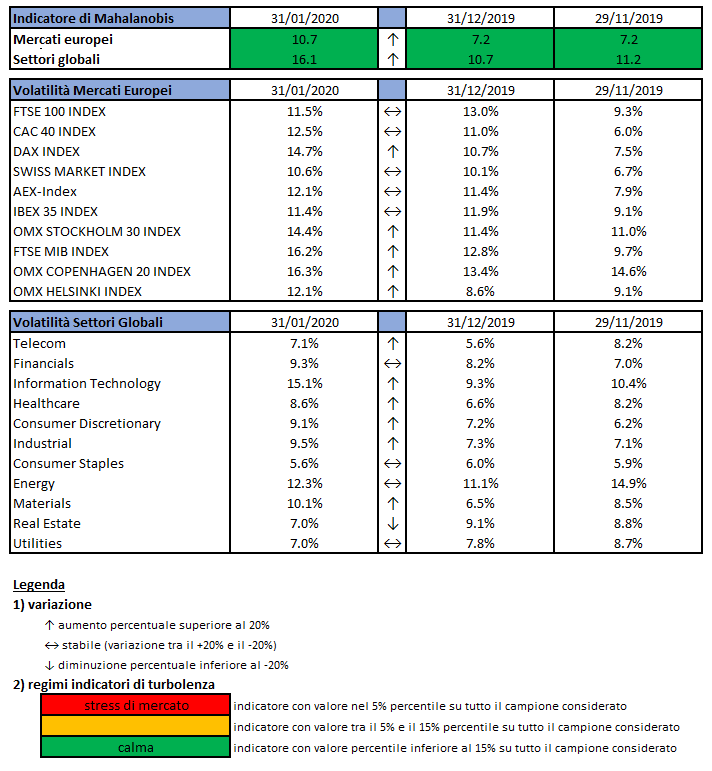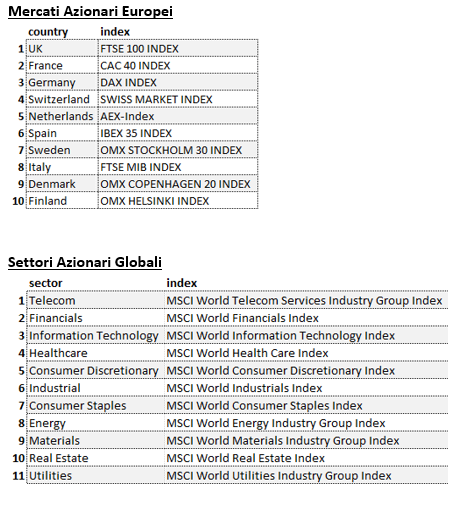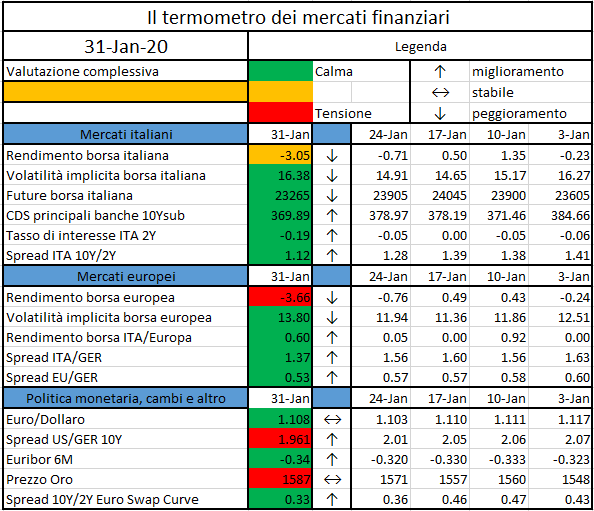Last 11 February 2019 the European
Commission (EC) asked the European Insurance and Occupational Pension Authority
(EIOPA) for a call for advice on the 2020 review of SII. As a response to that,
EIOPA launched a public Consultation Paper (CP) on the 15th October
2019 whose feedback were to be submitted by the 15th January 2020
(Insurance and Reinsurance undertakings submitted their results to the NSAs
last 6 December 2019, and the NSAs reported them to EIOPA last 8 January 2020).
EIOPA is now collecting the data and assessing the impacts of its proposals,
setting out the final advice by next 30th June 2020. The proposals
presented are a view of EIOPA and may not be adopted: the EC will balance
political considerations to the technical ones. It’s interesting to notice that
EIOPA has reiterated in the CP its suggestion of introducing negative interest
rates in the SF SCR calculation (advice dated 2018) previously rejected by the
EC.
The call for advice comprised 19 topics,
which can be broadly divided into three parts
- review of the Long Term Guarantee (LTG)
measures, always foreseen as being reviewed in 2020, as specified in the
Omnibus II Directive
- potential introduction of new
regulatory tools in the SII Directive, notably on macro-prudential issues,
recovery and resolution, and insurance guarantee schemes
- revisions to the existing SII
framework, including reporting and disclosure of the SCR.
The main proposals set out in the CP
and discussed in the following are:
- choose a later Last Liquid Point
(LLP) for the extrapolation of risk-free interest rates for the Euro or change
the extrapolation method to take into account market information beyond that
point; these are expected to increase both TP and SCR, particularly for firms
with long duration businesses
- change the calculation of the Volatility
Adjustment (VA), to address overshooting effects and to reflect the illiquidity
of insurance liabilities; 8 variations are proposed and, albeit they may help
in reducing the volatility caused by the current design, they may increase the
complexity of the calculation and even reduce the overall protection provided
by this measure
- review the calibration of the
interest rate risk sub-module in line with empirical evidence, considering
negative interest rates; this is expected to increase the SCR
- include macro-prudential tools in
the SII Directive and establish a minimum harmonised recovery and resolution
framework for insurance.
No changes have been proposed for
the Risk Margin (RM), causing the disappointment of many firms that consider
this metric too big for the annuity business and too sensitive to interest
rates changes – and therefore sensitive to the changes proposed to the LLP.
Positive and negative proposals have
been made with respect to the Matching Adjustment (MA), currently only applied
in Spain and UK. A good aspect is that EIOPA has proposed to recognize
diversification between MA and non-MA portfolios, reducing the SCR, but without
showing any intention to make the MA more flexible and adding a further
requirement on restructured assets that may make it harder for the firms to
apply the MA.
Regarding [A], EIOPA has proposed 5
options to amend the Euro LLP:
- no changes (i.e. LLP=20 years, Smith-Wilson
extrapolation)
- LLP=20 + safeguards in terms of
disclosure and governance
sensitivity analysis on LLP=50 to be
include in the RSR and SFCR; if the firms breach the SCR or MCR in the
sensitivity analysis, they have to provide evidences that the policy holders
protection is not put at stake by dividend payments and capital distributions,
which can be limited by the NSAs in case the evidences were not satisfying
- LLP=30 + safeguards in terms of
disclosure and governance (as in option 2)
- LLP=50
- alternative extrapolation method to
consider market data beyond the LLP for all the currencies
Beyond causing a detriment to the
SCR position of the insurance firms, options from 2 to 4 are quite onerous.
Regarding [B], EIOPA has proposed a
reform to the VA calculation that comprises 8 different design options, 3
different General Application Ratio (GAR), the usage of Dynamic VA (DA) under
the SF and approval to the use of VA.
The presented options for the VA
design are:
- “Undertaking-specific VA”, based on
undertaking-specific asset weights and market spreads
- “Middle bucket” approach, where the
current MA and VA approaches remain and the undertaking-specific VA is
introduced as the middle bucket. Firms can only apply the middle bucket to
insurance liability portfolios subject to meeting certain cash flow matching
criteria.
- “Asset driven approach”: the VA
would not be applied to the risk free curve. Instead, the VA would adjust the
bond spreads on the asset side, where the difference in the value of bonds without
and with the VA adjustment is recognised as an own funds item.
- Application ratio that takes into
account of the undertaking’s AL mismatch. The proposed formula to derive the VA
under this approach includes applying an asset liability (AL) mismatch ratio,
where the ratio is calculated as the sensitivity of the BEL to the VA divided
by the sensitivity of fixed income assets to the VA. Firms are also allowed to
derive the risk-corrected spread using either the VA reference portfolio or
their own specific fixed income portfolio (as under design option 1).
- Application ratio that takes into
account of the undertaking’s illiquid liabilities. EIOPA suggests two
approaches for this calculation: the first approach (paragraph 2.399) is
similar to option 4 above, except that an illiquid liabilities ratio is
applied; the second approach allocates liabilities to buckets of different
levels of illiquidity with different application ratios.
- “Relative risk-corrections”: the
risk correction is calculated as a fixed percentage of the spread.
- Amendment to the trigger and
calculation of any country-specific increase of the VA.
- Create a “permanent VA” that
reflects the long term illiquid nature of insurance cash-flows, and a
“macro-economic VA” that will only exist when bond spreads are wide, e.g.
during crisis. The macro-economic VA would replace the existing country
specific add-on.
EIOPA has proposed 2 approaches
based on a mix of these design options
APPROACH 1: permanent VA calculated as a combination of options
4, 5 and 6 and macroeconomic
VA
based on option 8.
APPROACH 2: permanent VA calculated as a combination of
options 1, 4 and 5.
The VA decreases in both approaches,
but the latter is preferred by the industry as it produces a lower impact.
The 3 options presented for the GAR
used in the VA calculation are:
- no changes (i.e. GAR= 65%), advised
by EIOPA
- GAR = 100%
- GAR between 65% and 100%.
EIOPA advice for the DA was not to
allow its usage under the SF as it would favour firms applying the SF versus
those applying the IM, as the government bond risks are not fully captured in
the SF.
EIOPA has highlighted that the need
of a supervisory approval for the usage of VA should be consistent among all
member states (it is currently required in 10 countries and not required in 17
others), but the Authority will decide on its preference after the
consultation.
Regarding [C], EIOPA has confirmed its previous advice dated 2018 (relative shift approach), highlighting the need of modifying the IR risk calibration
The 3-years gradual implementation
period would be reviewed in light of the proposed changes on the Risk Free
Rates reported in [A] and [B].
Regarding [D], EIOPA has proposed to
introduce tools to address systemic risk in the insurance sector by adding a
general article to the SII Directive, to achieve consistency and coherence with
the micro-prudential approach. NSAs should have the power to set a capital
surcharge to address sources of systemic risk, to define soft thresholds for
action at market level if an exposure increases dramatically and to impose a
temporary restriction on surrender rights for policyholders. NSAs can require systemic
risk management plans and all firms should be required to draft liquidity risk
management plans, unless they obtain a waiver. The ORSA principle will be
changed to explicitly include macro-prudential concerns. EIOPA has also
proposed to:
- require
firms with a high market share to develop a recovery plan
- set
an officially designated administrative resolution authority in each member
state
- provide
the NSAs with resolution powers of: prohibiting bonus payments to senior
management; withdrawing the licence to write new business and put all or part
of existing business into run-off; selling or transferring shares, assets and
liabilities to third parties; restricting the rights of policyholders to
surrender policies; suspending payments to unsecured creditors; until the point
of taking control of the entity.














